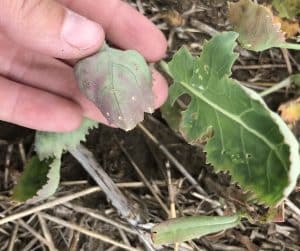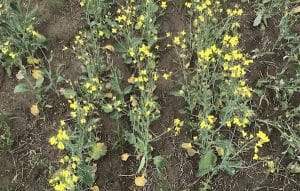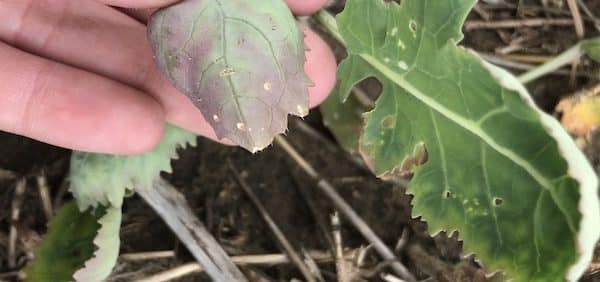Sulphur deficiency is more typical in sandy soil with low organic matter. Heavy rains can reduce sulphur availability because, in most Prairie soils, sulphate is not held by organic matter and clay particles since they are both negatively charged. Therefore, sulphate is vulnerable to leaching losses. Also note that sulphur can be highly variable across a field, so deficiencies will usually show up in patches.


Sulphur deficiencies look like:
- Top leaves are small and narrow, and are often cupped.
- Pale yellow leaves
- Prolonged flowering if the crop is having trouble setting seed.
- Small flowers with very pale yellow colouration.
- Short pods with little or no seed set.
A mild level of sulphur deficiency often does not result in noticeable symptoms, but can still reduce yield. Therefore, clear symptoms suggest a more serious shortage. If serious widespread shortages are noticed in a field, sulphur can be applied up to early flowering and still provide a yield benefit. This article has details on in-season applications.

